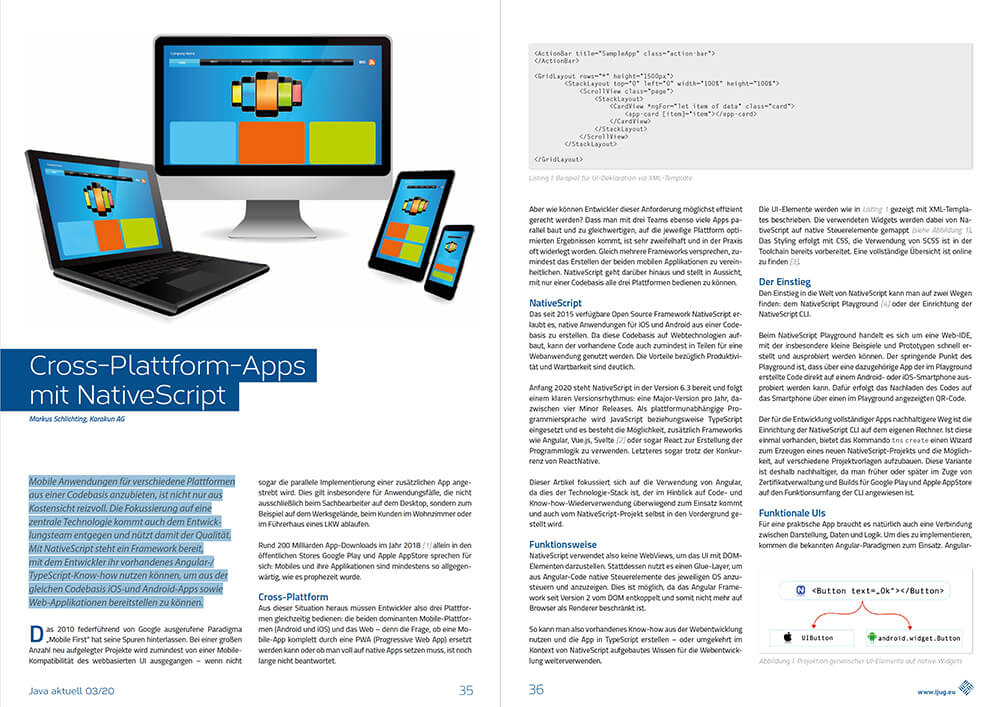In 2010, Google introduced the “Mobile first” paradigm. This has lead to the fact that today’s customers expect in most new software projects at least a mobile compatible, web-based UI or even a parallel implementation of a mobile app. This particularly applies to applications that are not only used by administrative staff on their desktop computers but also by employees working at the customers site, in the cab of a truck or somewhere in a factory.
And the figures speak for themselves: in the Google Play and Apple AppStore alone, about 200 billion apps were downloaded in 2018. Mobile phones and mobile applications are as ubiquitous as predicted.
Cross-platform
Considering this fact, software developers need to serve three platforms in parallel: Android, iOS and Web. Yes, also the web as the question if a mobile app may be replaced by a PWA (Progressive Web App) has not yet been answered.
How can developers efficiently meet these requirements? Real-world experience has shown that having three teams building equivalent, for each platform optimized applications is more than questionable and not practicable. There are different frameworks available that promise to standardize at least the development of mobile apps. NativeScript even goes one step further and claims to serve all three platforms from one single code base.
I wrote an article about the possilities of NativeScript for the German-speaking Java aktuell magazine. Or click on the following picture to dowload the article.
